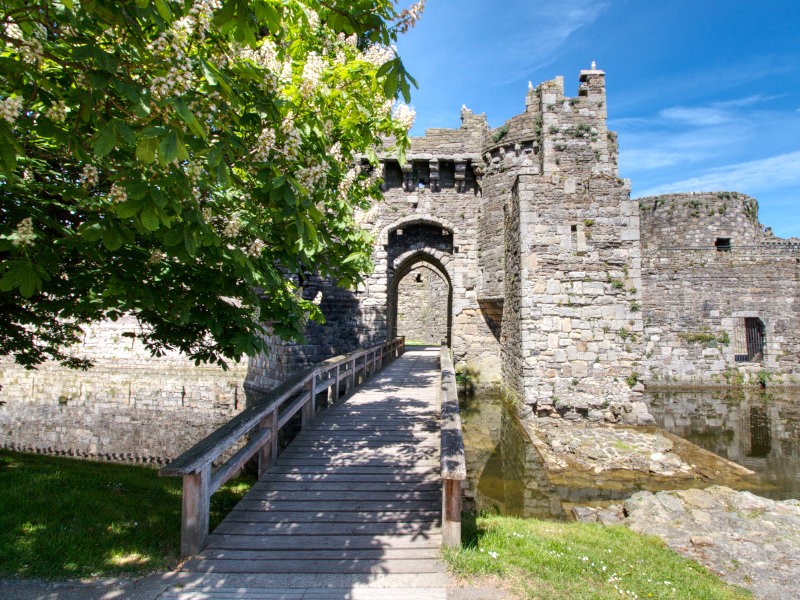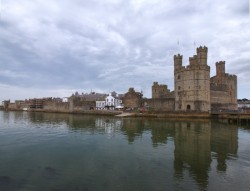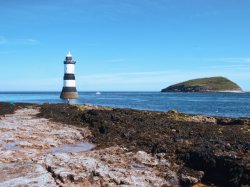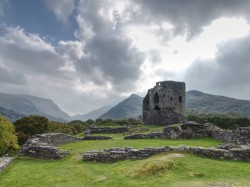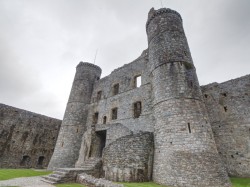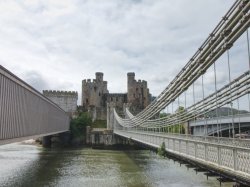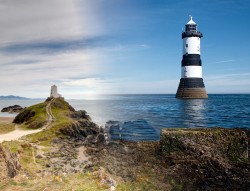So many of the castles around north Wales are perfect examples of the medieval era of fortifications from European history, but I don't think there are many quite as traditional as Beaumaris Castle. This stunning stone structure features all of the best features a typical 9-year-old would add when asked to draw a castle - huge round towers and solid walls with a wide and formidable moat extending out in front of it. Like many of its kind in the area, the history of Beaumaris is linked directly to English occupation, but this castle was the final piece of the Ring of Iron and is, in fact, the last of Edward I's castles. Unlike places such as Conwy or Caernarfon, the outer fortified town was never truly finished, but to fully understand why that was we need to look back at why the castle came to be in the first place.
A little history
Previously, in our article about Caernarfon Castle, we talked a bit about the bloodied history between the English and the Welsh. There is a lot to learn about this part of history and in our abridged version we discussed the English occupation and the Ring of Iron which was created to impose rule over the area, but today I want to draw a little more information out of a line from that article:
...rebellions would target the castle often including one in 1294 that successfully, albeit briefly, managed to capture the town.
The year is 1294, English rule in the area had been solidified for roughly the last 10 years. Castles at several other locations in the north, including Caernarfon, Conwy and Harlech, were already erected and garrisoned but plans for a fortress had been postponed on the island of Anglesey due to the already colossal cost of the Ring of Iron. However, that decision would be reversed after the rebellion of Madog ap Llywelyn; Madog was a part of the lineage which traced back to the previous King of Gwynedd and after increased taxation on the Welsh, named himself the successor to all royal titles rightfully his.
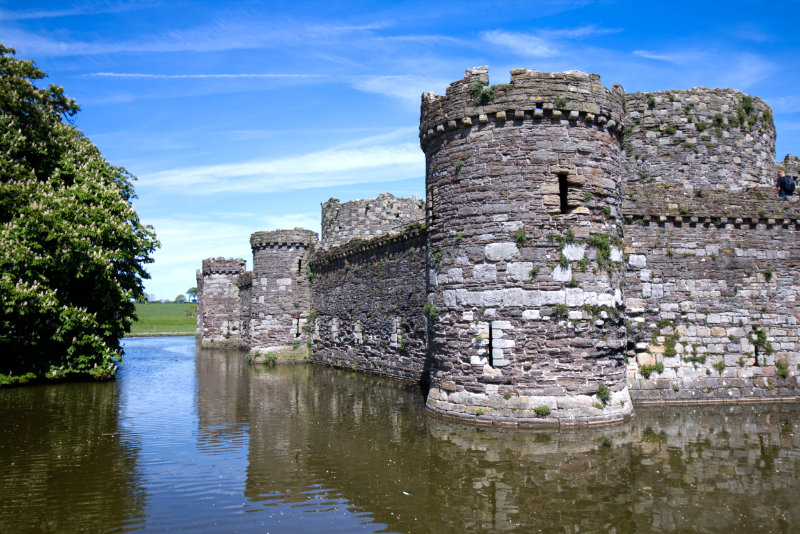
The rebellion was well coordinated, with multiple attacks occurring on the same day across Wales. These attacks had been scheduled to coincide with the Anglo-French war of 1294, with Madog aiming to capitalise on the English army had already sailed to the continent; unfortunately, this was not the case as the army had yet to depart, and ultimately postponed their French campaign to fight the Welsh uprising. As mentioned in the quote above, Madog's forces including his generals were able to overrun Caernarfon, along with Hawaraden, Ruthin, Morlais and Denbigh castles. His forces also laid siege to Builth, Criccieth and Harlech castle.
Local English barons attempted to recapture lands and castles, but it would not be until the mobilisation of the English army that the rebellion would be quashed. Edward I's army was able to relieve many castles on the brink of falling to siege and retake lands across Northern Wales. On the 5th March 1295, the battle of Maes Moydog took place, a surprise attack by the Earl of Warwick. The Welsh fought hard against an English army, but between overwhelming arrow fire and a retreat that forced routed Welsh men to their watery graves in the river Banwy, the Welsh army was broken. Madog had become a fugitive and before long would be captured and turned over to the English for imprisonment.
With the rebellion crushed, Edward I immediately prioritised the construction of fortifications in the area and Beaumaris was selected as the final castle for the Ring of Iron. The location selected, just 1 mile away from the existing settlement of Llanfaes, meant the English would forcibly move Welsh residents to Newborough. As is often the case with the towns that were constructed along the Ring of Iron, they would exclusively be for English occupants and the Welsh would be treated as second class citizens here. The construction would go on some time, with the rate of building ebbing in flowing as other campaigns, such as the then on-ongoing first war for Scottish independence, were prioritised; the castle would never truly be finished as the outer defences would never see their final form and by 1330 construction would halt entirely and the castle would fall into a state of disrepair. While that may be an unfortunate end to such a monumental structure, it is a fate that faces pretty much every defensive structure once technology evolves beyond them although it is a shame construction never appeared to truly finish.
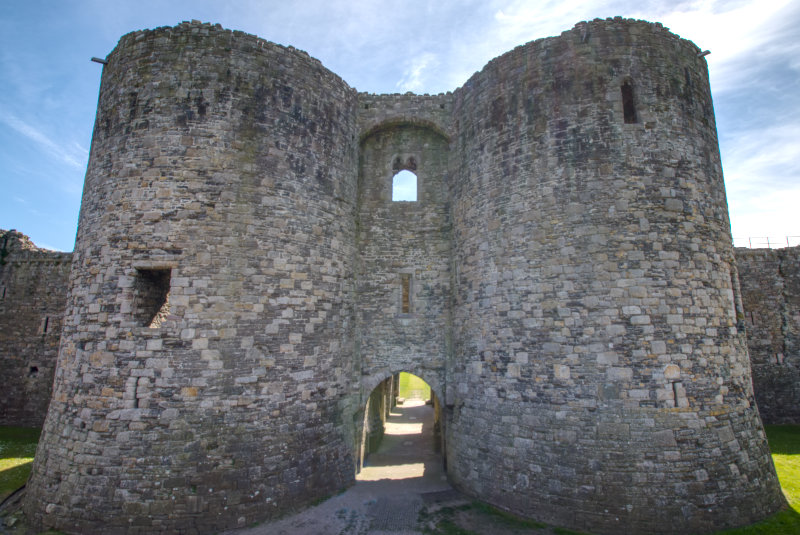
Exploring Beaumaris
Arriving at Beaumaris couldn't be simpler, follow your sat-nav into the town and find somewhere to park. The town has plenty of options for parking, and if you happen to have followed the A545 into town the castle is hard to miss - if it wasn't for the gates you could quite easily drive straight into the moat! Parking is dotted around the town, just be aware of some of the narrower streets and one-way systems. In our visit, we made use of the short-stay parking on Rating Row which meant we were able to jump out of the car and straight into the castle. Longer stay options are dotted around the town, with the obvious massive green space directly opposite the castle offering all-day parking.
If you are planning to explore the town, only a handful of tiny pieces remain of the original town walls, but if you explore beyond the fortifications this gorgeous town filled with appropriately narrow streets and colourful buildings is well worth a stop-off. We had only planned a short visit when on our corner-to-corner journey across Anglesey to see two of its many beautiful lighthouses, so we really didn't have much time to explore the town in any real detail. In hindsight, I would love to return to this picturesque little town and spend more time here, between the seafront pier looking out onto a calm Menai Strait and intertwined streets full of hidden treasures I think a future trip is certainly in order.
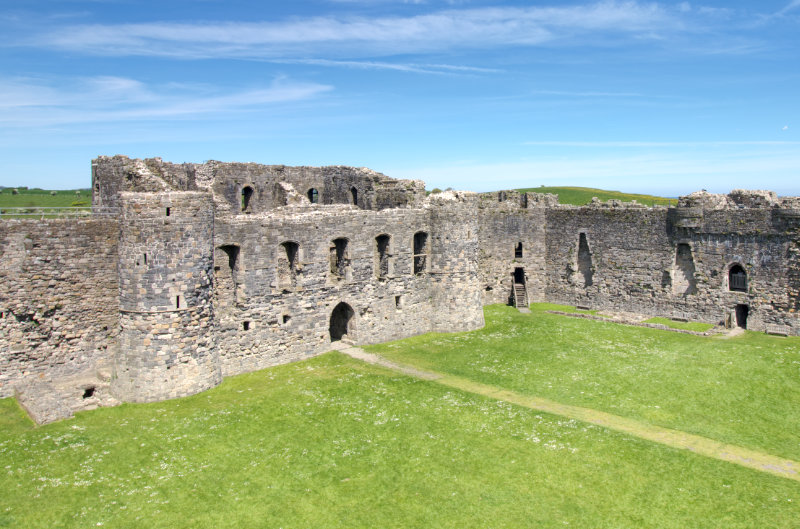
As unfinished as it may have been, Beaumaris Castle is unquestionably beautiful; I know I often get a little excited around historical buildings and certainly have a slight bias, but with the sun shining on the moat reflecting those curtain walls it is one of those sights that awakens my inner child again! The entrance from the ticket office sees you navigate the moat around to the entrance bridge and its entrance defences - the harsh edges of the square entrance towers would have been an imposing sight for any would-be attacker. Previously, the building adjacent to the gate tower would have formed a supply dock that allowed the castle to be supplied directly via sea. There was also a secondary entrance to the North, almost directly opposite the sea gate, although this entrance was never finished and eventually stoned up.
Like with every castle of its type Beaumaris Castle has a handful of nooks-and-crannies to be explored, but its most defining feature is its spacious inner bailey, or inner ward, which forms one of the largest I have ever visited. The inner bailey seems to have been designed to be nigh on impregnable, with colossal walls and gatehouses to match. It would have appeared that the castle was designed to house many important families, with fireplaces and various other remnants of the inner rooms of the castle. Now, all that stands in their place is beautifully manicured lawns and a wealth of information regarding how Beaumaris Castle came to be. In a lot of ways, this castle feels like a natural evolution from Harlech castle, taking that simple design and expanding its defensive potential to the max.
Take your time to walk the inner and outer walls, enjoy the views and picture all of the years of history that have taken place within these walls. Beaumaris Castle is a perfect day out for an easy-going delve into history, and its surrounding town has plenty to offer those who love quaint Welsh villages full of charm and character. Plus Anglesey has a wealth on offer to see, whether that is the previously mentioned journey to the beautiful lighthouses, the equally spectacular South Stack Lighthouse, the pristine National Trust Plas Newydd or anything else you may fancy! This is one of those great locations that can form a day out in itself or paired with a handful of other wonderful stops to really fill out a satisfying day in Wales.
